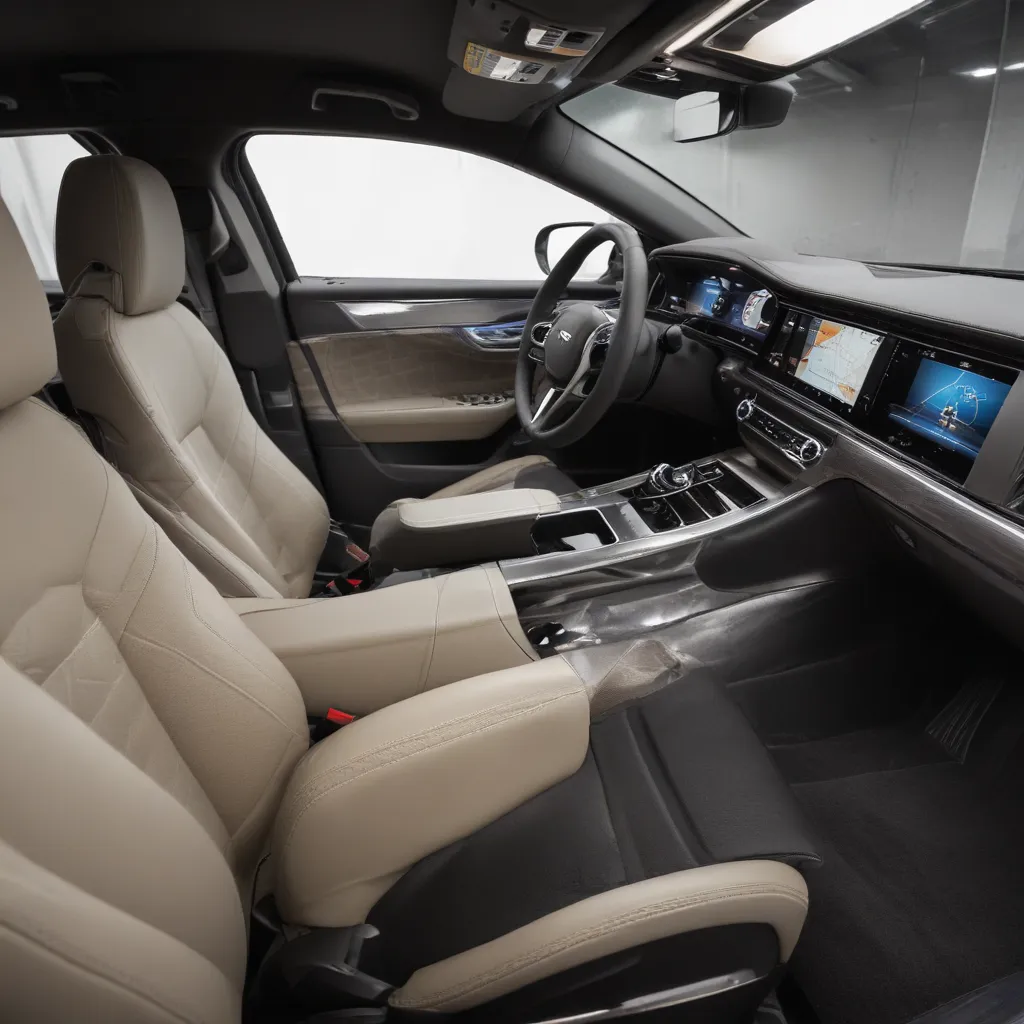
The Importance of Ergonomics in Vehicle Design
As the owner of an RV and fleet vehicle repair company in Orange County, California, I’ve seen my fair share of vehicles with suboptimal interior designs. While aesthetics and performance are certainly important considerations, the ergonomics of a vehicle’s interior can have a profound impact on the driver’s experience, safety, and overall satisfaction. In this article, we’ll delve into the world of driver-friendly vehicle interiors, exploring the key principles of ergonomic design and how they can be applied to enhance the driving experience.
Imagine yourself behind the wheel of your favorite vehicle. Are you able to comfortably reach all the controls? Can you easily access the dashboard and infotainment system without straining your neck or back? These seemingly minor details can make a world of difference in how you perceive and interact with your vehicle. Ergonomics, the study of designing products to fit the human body and its capabilities, is the foundation for creating truly driver-friendly interiors.
One of the primary goals of ergonomic design is to minimize fatigue and strain on the driver’s body. This involves carefully considering the placement and design of essential controls, such as the steering wheel, pedals, and gear shifter. A well-designed interior should allow the driver to maintain a neutral, relaxed posture, reducing the risk of muscle tension and discomfort during long drives.
Customizing the Driving Experience
But ergonomics isn’t just about physical comfort – it also plays a crucial role in cognitive ergonomics, which focuses on the mental processes involved in operating a vehicle. The layout and organization of the dashboard, for instance, can greatly impact the driver’s ability to quickly locate and access the information they need. A cluttered or confusing interface can lead to distractions and increased cognitive load, compromising the driver’s focus and potentially jeopardizing their safety.
One of the ways vehicle manufacturers have addressed this challenge is through the implementation of customizable driver settings. By allowing drivers to adjust the position of the seat, steering wheel, and other controls to their preferred settings, they can create a tailored driving experience that caters to their unique needs and preferences. This level of personalization not only enhances comfort but also improves the driver’s sense of control and confidence behind the wheel.
Integrating Advanced Technologies
As technology continues to advance, the role of ergonomics in vehicle design has become even more critical. Modern vehicles are equipped with a wide array of sophisticated features, from touchscreen infotainment systems to advanced driver assistance technologies. Ensuring that these technologies are seamlessly integrated into the vehicle’s interior design is essential for maintaining a distraction-free and user-friendly driving experience.
One area where this integration is particularly important is the placement and design of in-vehicle displays and controls. Poorly positioned or difficult-to-use controls can force the driver to take their eyes off the road, increasing the risk of accidents. Ergonomic design principles, such as positioning controls within easy reach and optimizing the size and layout of displays, can help mitigate these dangers and create a more intuitive and safer driving environment.
Designing for Inclusivity and Accessibility
But driver-friendly vehicle interiors aren’t just about optimizing for the “average” driver. In today’s diverse world, it’s essential that vehicle design considers the needs of drivers with a wide range of physical abilities and preferences. This means incorporating features that cater to individuals with disabilities, such as adjustable pedals, steering wheel controls, and voice-activated commands.
By embracing inclusive design, vehicle manufacturers can not only improve the driving experience for a broader range of customers but also demonstrate their commitment to social responsibility and accessibility. This not only enhances the brand’s reputation but also sends a powerful message about the importance of designing for all.
The Future of Ergonomic Vehicle Design
As we look to the future, the role of ergonomics in vehicle design will only continue to grow in importance. With the rise of autonomous and semi-autonomous driving technologies, the driver’s role is evolving, and the interior of the vehicle will need to adapt accordingly. Designers will need to reimagine the driving experience, creating environments that seamlessly integrate advanced technologies while still prioritizing the comfort and safety of the occupants.
Imagine a future where the driver’s seat can swivel to face the back of the vehicle, transforming the interior into a mobile living space. Or a scenario where the dashboard and infotainment system can automatically adjust their layout and functionality based on the driver’s preferences and the driving conditions. These are the kinds of innovative solutions that will emerge as ergonomics and human-centered design take center stage in the automotive industry.
Conclusion: Putting Drivers First
At the end of the day, the success of any vehicle design ultimately comes down to how well it meets the needs and preferences of the driver. By embracing the principles of ergonomic design, vehicle manufacturers and repair shops like mine can create interiors that not only look and perform great but also enhance the overall driving experience.
As we continue to push the boundaries of what’s possible in vehicle design, it’s important to remember that the driver should always be the focal point. By putting their comfort, safety, and usability at the forefront, we can create vehicles that are not only a pleasure to drive but also a true extension of the driver’s needs and preferences.
So, the next time you’re behind the wheel, take a moment to appreciate the ergonomic features that make your driving experience more comfortable and efficient. And if you’re in the market for a new vehicle or need to have your current one serviced, be sure to keep ergonomics in mind as a key consideration. After all, a driver-friendly interior is the foundation for a truly exceptional driving experience.
